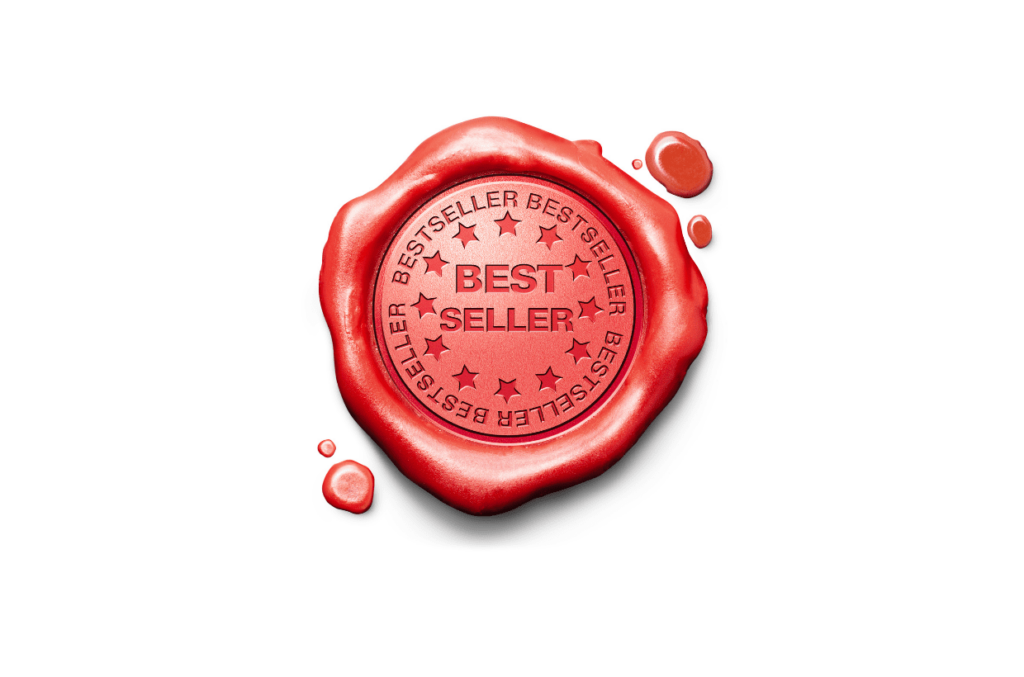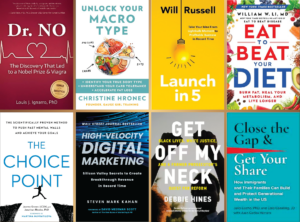The 7 Traits of a Bestselling Book Title

Share
You might not know that the book titles of 95% of all the bestselling books of all time (including present day bestsellers) have 7 basic traits in common, but they do. Here’s the breakdown of what they are.
First, here’s how I came up with the list.
Anyone who knows me knows I’m a geek about looking for connections and patterns. One of the areas I got curious about was bestselling book titles. I’d offhandedly noticed some shared traits that indicated there might be some patterns, so I tapped into my journalist background and did some investigative work.
I started first by looking at current New York Times bestsellers lists for nonfiction, and I found a total of 7 traits that were present in nearly every case.
Then, I decided to research the bestselling books of all time, both fiction and nonfiction.
My observations held up.
Of course, you’ll always find outliers, but 95% of bestselling book titles exhibit these traits.
I’ve broken them down into 4 traits of bestselling “main titles” and 3 that are present in nearly all bestselling subtitles.
Let’s get started.
What is in a Title?
A title has two fundamental components: the main title and the subtitle. Each of these serves a specific purpose.
The main title’s purpose is to sell. This means, it must provide some clue as to the content, but the most important thing it needs to do is grab your reader’s attention.
The subtitle’s purpose is to tell. Your subtitle must answer the question that your reader is asking themselves: “Why should I read this book?” or “What’s in it for me?”
The 4 Traits of a Bestselling Main Title
Trait #1: It’s Punchy.
This means it’s both impactful and short.
Impactful in that it packs a punch. It causes a pattern interrupt. It steals your reader’s attention from whatever they were thinking about the moment before. They should say to themselves: “Whoa! What’s that?”
Short in that it’s got very few syllables. Less than 10 to be specific.
I challenge you. Go to any week’s national bestsellers top 10 or top 100 lists, meaning The New York Times, Wall Street Journal, USA Today, or the current bestsellers on ALL of Amazon. You will find consistently that about 85% of all national bestselling titles will contain one to six syllables. Ninety to 95% will contain 8 syllables or less, and almost all of them, meaning up to 99% will have fewer than 10 syllables.
You could go back to the beginning of time for books, and you will find this to be true. How to Win Friends and Influence People, by Dale Carnegie, and Zen and the Art of Motorcycle Maintenance are two of the top selling outliers of all time (at 10 and 12 syllables respectively). The 7 Habits of Highly Effective People is the mack-daddy of all I found, with a whopping 13 syllables!
Trait #2: It’s Easy to Spell.
This is one of the more “modern” developments of bestselling titles. It’s about the Google factor.
Think about how people find books. Sure, some still do the “browse the bookstore until something jumps out at you” method, but more often than not, people buy their books online, or at least research the books they want online before going into the bookstore.
So, you should make sure your book’s main title is around a fifth-grade spelling level. Use familiar, easy-to-spell words.
It can be a bit harder to get away with cutesy titles that aren’t really on point, or titles with made-up words. This doesn’t mean you can’t use a made-up word and have a New York Times Bestseller. You can (think Freakonomics). You just have to be strategic about it, embedding keywords in the metadata, so a search engine will still be able to pick it up.
Trait #3: It’s Direct
Especially if you’re writing a how-to or self-help book, get to the point. Don’t muddy the waters: ‘nuff said.
Trait #4: It’s Memorable
Have you ever had somebody tell you about a book, and you’re really curious and interested, and then when you go to buy it, you can’t remember the title? I know it’s happened to me many times, and that’s a problem. Because your prospective reader has to be able to remember the title long enough to buy the book. I think this is one of the reasons why shorter titles tend to lead to more bestsellers.
Another thing that you can do to help make your book memorable is to use a turn of phrase that is already in the collective consciousness, or use something well-known with a twist.
Let’s look at some examples.
Some books use an idea that is already an idiom. It’s something that people use as a turn of phrase or a form of speech. For example, the book My Cross to Bear by Alan Light and Greg Allman. That phrase is so common, so it’s easy for the reader to hold on to it long enough to go and buy the book.
Another approach, that I personally think is more fun, is when an author takes something that’s already in collective consciousness and adds a twist to it, making it more memorable and brings in a layer of creativity.
One of my favorite examples of this route is the memoir by Chelsea Handler called: Are You There, Vodka? It’s Me, Chelsea. Obviously, she’s doing a play on the famous book for adolescent girls by Judy Blume, Are You There, God? It’s Me, Margaret.
It’s a very funny twist because the one book is about a girl coming of age and this book is more about a woman coming into something.
Chelsea Handler’s book title choice is also particularly brilliant because she’s speaking to her demographic. Her ideal reader would’ve been an adolescent girl when Are You There, God? It’s Me, Margaret hit the shelves in YEAR. It was such a massive bestseller, she probably read it. So, it was a very clever way to add a twist and make Handler’s memoir irresistible to her current audience.
The Three Traits of a Bestselling Subtitle
Trait #1: Show your reader what’s in it for them
You can accomplish this in two ways: one is by focusing on the benefits, benefits, benefits of reading the book. The other way is to show what the reader can avoid by reading your book – what they don’t want to happen.
Or you can do both.
A good example of this is Jen Sincero’s perennial bestseller, You Are a Badass: How to Stop Doubting Your Greatness and Start Living an Awesome Life.
She covers both bases in her subtitle. She’s telling you that by reading her book, she will show you 1. how to stop something you don’t want, “Doubting Your Greatness,” and 2. how to do something you do want, “Start Living an Awesome Life.”
Trait #2: NO unmarked vans
I have this analogy that I share from time-to-time with my coaching clients. You have to show your reader where you’re taking them. You can’t just metaphorically up next to your reader in an unmarked white van, slide open the door, and say, “Get in! Get in the van. I promise, this’ll be great!”
They’re not going to want to do that.
However, if you pulled up in a limousine that they expected to come with a big sign on it that says, “New York City-bound,” they’ll be more eager to join you.
This is all to say: be clear in your subtitle.
For example, one of our client’s books, Eat to Beat Disease: The New Science of How Your Body Can Heal Itself, which is a New York Times bestseller covers all the bases. His subtitle has a clear benefit statement that tells the reader exactly where he’s taking them. And it’s greater health. Something we all want.
Trait #3: Be brief
My rule of thumb is your subtitle should be no longer than half a Tweet. So, that’s 70 characters or less, including spaces. I generally find that with anything longer than that, you’re pushing it.
Take, for example, Sheryl Sandberg’s book, Option B: Facing Adversity, Building Resilience, and Finding Joy. The subtitle is 54 characters with spaces. It’s short, sweet, and tells us everything we need to know about whether the book is for us.
The Bottom Line is This:
If you want your book to be a bestseller, make sure the main title is short, impactful, direct, and memorable, and the subtitle is clear, concise, and tells the reader what benefits they’ll get from reading your book.



